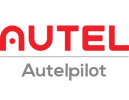Geotagged photos are photos that embed geographic information such as the latitude and longitude of the shooting location and altitude in the metadata of the photo.
Geotagged photos taken by drones can usually accurately record the location, angle and other flight parameters of the drone when shooting. This technology has important application value in many fields, including surveying and mapping, agriculture, construction, disaster relief and other fields.
How does drone geotagged photos work
The generation of drone geotagged photos depends on the global positioning system (GPS) or global navigation satellite system (GNSS) on the drone. The system can obtain the location data of the drone in real time and embed this data into the metadata (Exif) of each photo. The specific process is as follows:
GPS data acquisition: During the flight of the drone, the GPS module will continuously record the latitude and longitude, altitude, flight direction and other information of the current location.
Photo shooting: Every photo taken by the drone will automatically record the time, location and other flight data when it was taken.
Embed metadata: The metadata (Exif information) of the photo will contain geographic location information, such as latitude and longitude, altitude, shooting time, etc. When viewing or processing these photos later, you can directly use these geographic data.
Post-analysis and application: Geotagged photos can be processed by professional software to generate two-dimensional maps, three-dimensional models or other geographic information data.
Application areas of drone geotagged photos
Surveying and mapping: Geotagged photos are widely used in surveying and mapping. Photos taken by drones with location information can be processed by photogrammetry software to generate orthophotos, three-dimensional terrain models, or integrated with geographic information systems (GIS) to provide accurate map data. This is essential for topographic surveys, infrastructure construction, land surveying and other tasks.
Agriculture and vegetation monitoring: Drones can take geotagged multispectral images for monitoring crop health, detecting diseases, calculating vegetation indices (such as NDVI), etc. This method enables farmers and agricultural companies to optimize irrigation, fertilization and crop management strategies through accurate data, increase yields and reduce costs.
Construction and engineering monitoring: In construction and infrastructure projects, geotagged photos can be used for construction progress monitoring and completion acceptance. Drones can take geotagged photos from the same location regularly to provide records of the construction phase for engineers and managers to analyze and track project progress.
Disaster assessment and emergency rescue: After a natural disaster (such as an earthquake, flood, or fire), drones can quickly fly to the disaster area and take geotagged photos. These photos can provide real-time images of the disaster area and provide important geographic information for rescue team planning, helping to efficiently allocate resources and guide rescue operations.
Environmental protection and ecological monitoring: Geotagged photos taken by drones can be used to monitor environmental changes over a long period of time. For example, they can be used to record changes in ecological environments such as rivers, reservoirs, and forests. Geotagging allows researchers to accurately compare ecological changes over different time periods in order to better protect the environment and manage resources.
Archaeology and cultural heritage protection: Geotagged drone photos provide new tools for archaeology and cultural heritage protection. Archaeologists can use drones to take panoramic and detailed photos of sites and combine them with geographic location information to generate three-dimensional models for research and protection of cultural relics.
Technical advantages of geotagged photos
Accurate location: Using GPS or GNSS technology, drones can accurately mark the latitude, longitude, and altitude at the time of shooting. This allows each photo to have not only image information, but also its corresponding geographic location.
Data integration: Geotagged photos can be combined with GIS, 3D modeling software, etc. to achieve comprehensive analysis and application of multiple data, and improve data accuracy and reliability.
Automated processing: The flight path and shooting plan of modern drones can be automatically generated by software to ensure coverage of the target area and automatically generate geotagged image data without human intervention.
Quick deployment and real-time update: Compared with traditional mapping methods, drones can quickly obtain ground data in a short time. This efficient image acquisition method is particularly important in emergency response and disaster assessment.
How to obtain and use drone geotagged photos?
Choose the right drone and camera: Most modern drones, especially those for professional fields (such as DJI, Autel, etc.), have built-in GPS modules and support automatic generation of geotagged photos. It is necessary to ensure that the drone and camera can meet the mapping accuracy requirements.
Flight planning: Before shooting, you can use route planning software (such as DroneDeploy, Pix4D, etc.) to set the flight path of the drone to ensure coverage of the shooting area and overlap of photos. The software usually automatically records and embeds geotagged information.
Photo processing software: In order to use geotagged photos for mapping, 3D modeling and other purposes, it is usually necessary to use professional software tools such as Pix4D, Agisoft Metashape, etc. These software can integrate photos into high-precision 2D maps or 3D models and perform further analysis.
Technical limitations and challenges of geotagged photos
GPS accuracy:
The GPS accuracy of drones is usually at the meter level. If higher positioning accuracy (such as centimeter level) is required, technologies such as RTK (real-time dynamic positioning) or PPK (post-processing dynamic positioning) are required. High-precision GPS systems are very important for mapping and high-precision model building.
Large amount of data processing:
The amount of high-resolution photos taken by drones is very large. Processing and storing this data requires high-performance computing devices and large-capacity storage space.
Weather conditions:
The flight and shooting of drones will be affected by weather conditions, such as excessive wind speed and poor lighting, which will affect the quality of the image and the accuracy of the shooting. It is recommended to choose suitable weather conditions for flight to ensure the reliability of the data.
Regulatory restrictions:
In some areas or special occasions, drone flights are restricted. For example, in sensitive areas such as near airports and military areas, special flight permits may be required. Therefore, before conducting drone photogrammetry, it is important to understand local laws and regulations.
Future Trends in Drone Geo-Tagged Photos
Popularization of RTK and PPK Technology:
As demand increases, more and more drones will be equipped with RTK (Real-Time Kinematic Positioning) and PPK (Post-Processing Kinematic Positioning) systems as standard. This can improve positioning accuracy to the centimeter level, greatly improving the accuracy and application range of geo-tagged photos. Among Autel drones, you can choose Autel EVO II PRO RTK V3 and Autel EVO II 640T RTK V3, which can achieve centimeter-level measurement accuracy.
Multi-sensor fusion:
In addition to traditional RGB cameras, drones are gradually integrating other sensors, such as thermal imaging cameras, multispectral cameras, and laser radar (LiDAR). These sensors can capture more dimensional environmental information, which will further enhance the functions and applications of geo-tagged photos.
Artificial intelligence and big data analysis:
Combined with artificial intelligence and machine learning technology, geotagged photos taken by drones can be classified, identified and analyzed more quickly and accurately, automatically generating maps, models and reports, and reducing manual processing time.
Automated flight and real-time processing:
In the future, drone flight missions will be more automated. Combined with 5G networks and edge computing, the processing of geotagged photos can be completed in real time during the flight of drones, further improving the efficiency of data acquisition and application.
Summary
Drone geotagged photo technology combines the flexibility of drones with the accuracy of GPS and is widely used in surveying and mapping, agriculture, construction, disaster monitoring and other fields. Through professional processing software, these photos can generate high-precision two-dimensional maps, three-dimensional models and a variety of analysis reports. With the popularization of RTK technology, multi-sensor integration, and the application of AI, drone geotagged photos will play an increasingly important role in future surveying and mapping and information collection.








